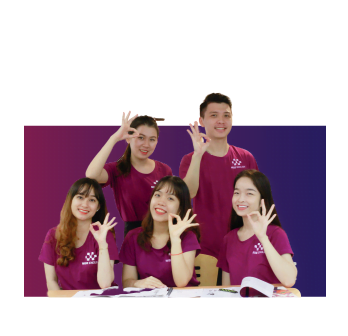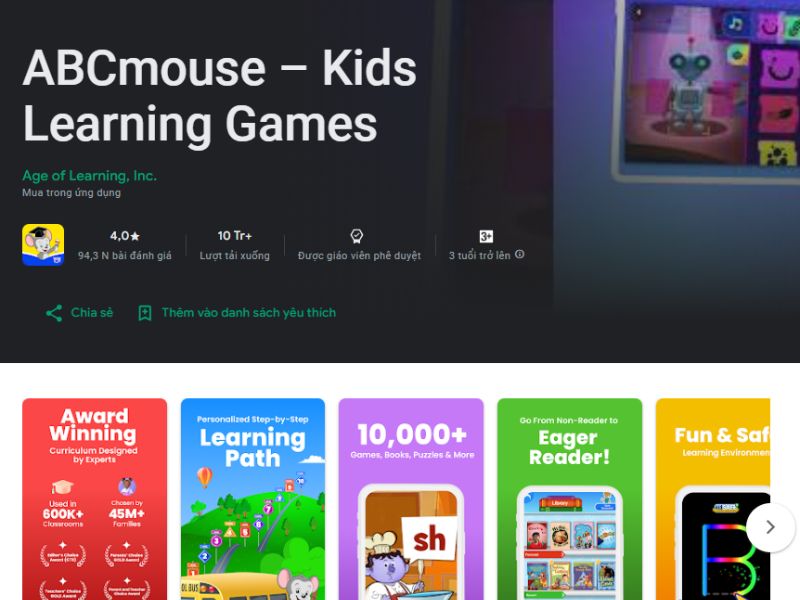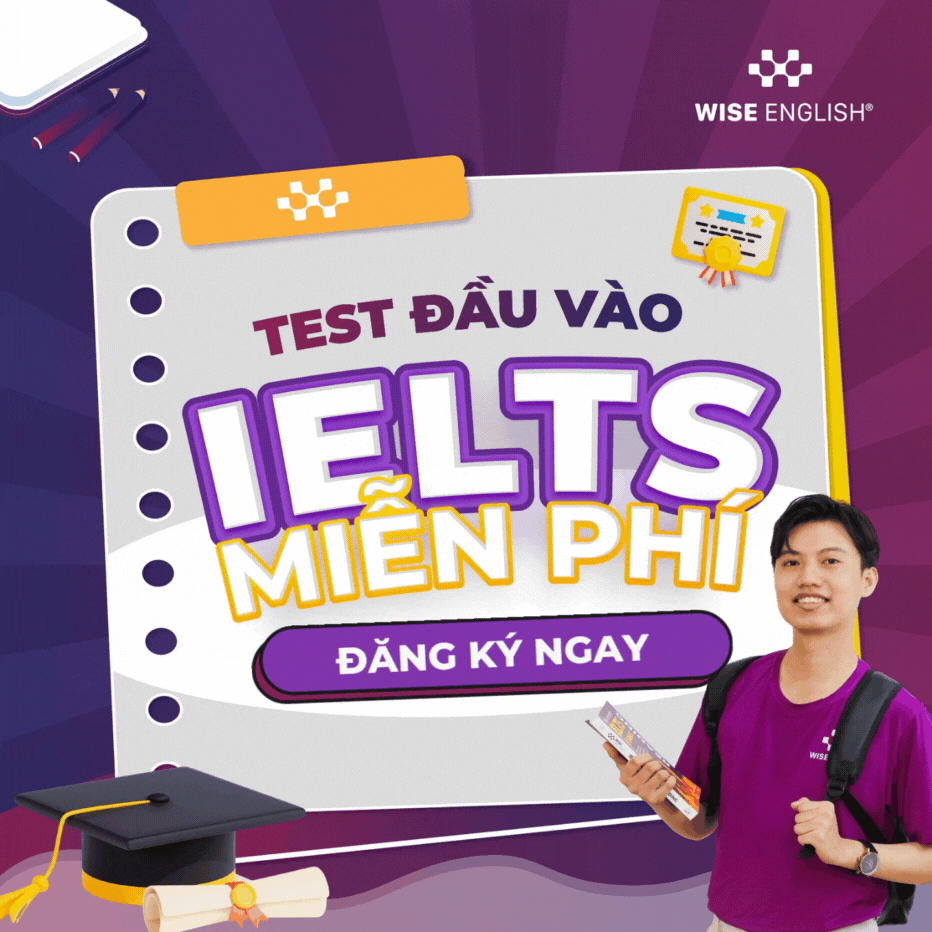Mặc dù IELTS Speaking chủ đề Transportation không phải là một chủ đề quá khó khăn, nhưng còn nhiều thí sinh vẫn cảm thấy bối rối khi phải trả lời về chủ đề này. Tuy nhiên, nếu bạn có sự chuẩn bị đúng cách, bạn hoàn toàn có thể vượt qua thử thách này một cách dễ dàng.
Nhằm hỗ trợ bạn, trung tâm tiếng Anh WISE ENGLISH sẽ giới thiệu các bài mẫu chất lượng cho từng phần của bài thi Speaking trong bài viết này. Bạn sẽ được làm quen với các từ vựng quan trọng và cách sử dụng chúng hiệu quả. Từ những câu hỏi đơn giản trong Part 1 đến những thảo luận chuyên sâu ở Part 3, bạn sẽ tìm thấy những điều cần thiết để tự tin và nổi bật trong kỳ thi IELTS.

1. Bài mẫu IELTS Speaking chủ đề Transportation Part 1
Sau đây là một số bài mẫu về IELTS Speaking chủ đề Transporation part 1, bạn có thể tham khảo nhé!
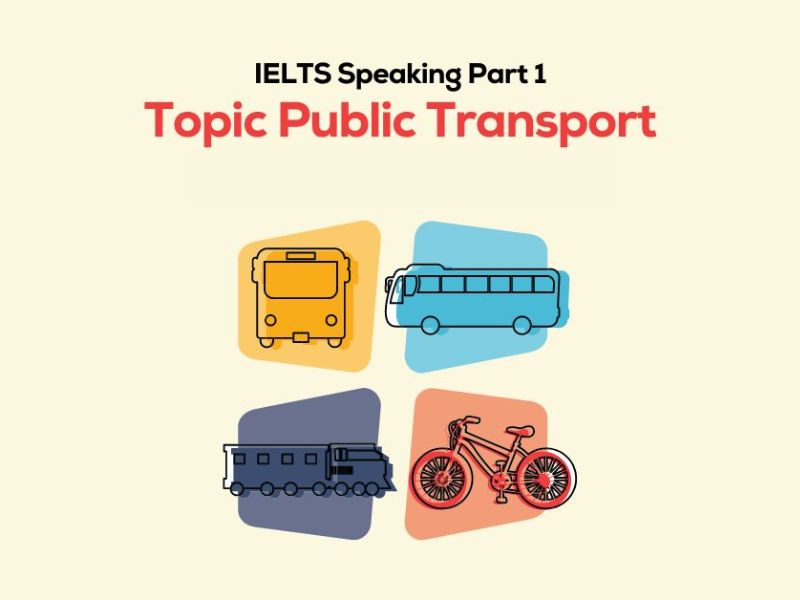
| Câu hỏi: What types of transportation do you usually use? |
I usually use public transportation like buses and trains to get around the city. I find it quite convenient because it helps me avoid traffic jams and reduces my carbon footprint. Sometimes, I also ride my bicycle for short distances, as it’s not only a good form of exercise but also an environmentally friendly option.
- Public transportation: Hệ thống giao thông công cộng (như xe buýt, tàu hỏa), thường được sử dụng bởi nhiều người để di chuyển trong thành phố.
- Convenient: Tiện lợi, dễ dàng để sử dụng.
- Traffic jams: Tắc nghẽn giao thông, tình trạng đường phố đông đúc, gây khó khăn cho việc di chuyển.
- Carbon footprint: Dấu chân carbon, lượng khí thải carbon dioxide mà một cá nhân hoặc tổ chức phát ra vào môi trường.
- Bicycle: Xe đạp, một phương tiện di chuyển bằng sức người.
- Environmentally friendly: Thân thiện với môi trường, không gây hại cho tự nhiên.
| Câu hỏi: How often do you use public transportation? |
I use public transportation almost every day, especially during weekdays when I commute to work. On weekends, I might use it less often, but I still rely on it to explore different parts of the city or visit friends.
- Commute: Di chuyển từ nhà đến nơi làm việc.
- Explore: Khám phá, tìm hiểu về những nơi mới.
- Rely on: Dựa vào, phụ thuộc vào.
| Câu hỏi: Do you prefer driving or taking public transportation? Why? |
I prefer taking public transportation because it allows me to relax and read while I travel. Driving can be quite stressful due to traffic and parking issues, whereas public transport helps me save time and money.
- Relax: Thư giãn, giảm căng thẳng.
- Stressful: Căng thẳng, áp lực.
- Parking issues: Vấn đề đỗ xe, khó khăn trong việc tìm chỗ để xe.
| Câu hỏi: How do you think transportation will change in the future? |
I believe that transportation will become more sustainable in the future. With advancements in technology, we might see more electric vehicles and improved public transport systems that are efficient and eco-friendly. Additionally, the rise of ride-sharing apps could further reduce the number of cars on the road.
- Sustainable: Bền vững, không gây hại cho môi trường.
- Technology: Công nghệ, kỹ thuật.
- Public transport systems: Hệ thống giao thông công cộng.
- Efficient: Hiệu quả, tiết kiệm thời gian.
- Eco-friendly: Thân thiện với môi trường.
- Ride-sharing apps: Ứng dụng chia sẻ xe, như Grab hay Uber.
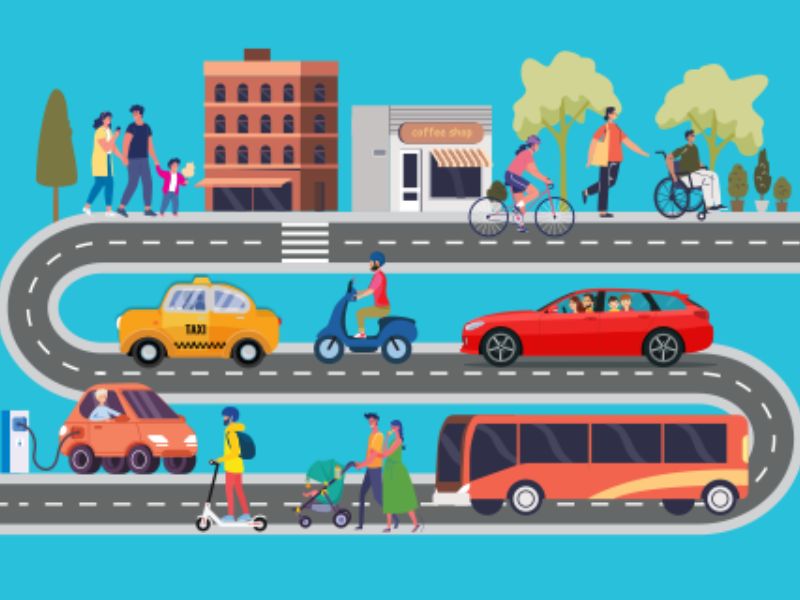
| Câu hỏi: Have you ever had a bad experience while using public transportation? |
Yes, I once experienced a delay on a train during rush hour. It was quite frustrating because many passengers were standing and felt uncomfortable. However, the staff was helpful in providing updates, which eased some of the tension.
- Frustrating: Thất vọng, bực bội.
- Rush hour: Giờ cao điểm, thời gian mà nhiều người di chuyển.
- Passengers: Hành khách, người sử dụng phương tiện giao thông.
- Staff: Nhân viên, người làm việc tại cơ sở giao thông công cộng.
- Updates: Thông báo mới, thông tin cập nhật.
| Câu hỏi: What is the most popular mode of transportation in your city? |
In my city, the most popular mode of transportation is the bus system. It is affordable and has extensive coverage, making it easy for residents to travel to various destinations. Many people also use motorbikes for their convenience in navigating through narrow streets.
- Bus system: Hệ thống xe buýt, phương tiện giao thông công cộng.
- Affordable: Giá cả phải chăng, không đắt đỏ.
- Extensive coverage: Phạm vi phục vụ rộng rãi, nhiều tuyến đường.
- Motorbikes: Xe máy, phương tiện cá nhân phổ biến ở nhiều nước.
- Narrow streets: Đường phố hẹp, khó khăn cho các phương tiện lớn.
📌 Có thể bạn quan tâm: IELTS Speaking Topic Part 1 – Các chủ đề bắt buộc phải biết
2. Bài mẫu IELTS Speaking chủ đề Transportation Part 2
Một số bài mẫu về IELTS Speaking chủ đề Transportation part 2 và hãy thử áp dụng thử vào bài nói của bạn:
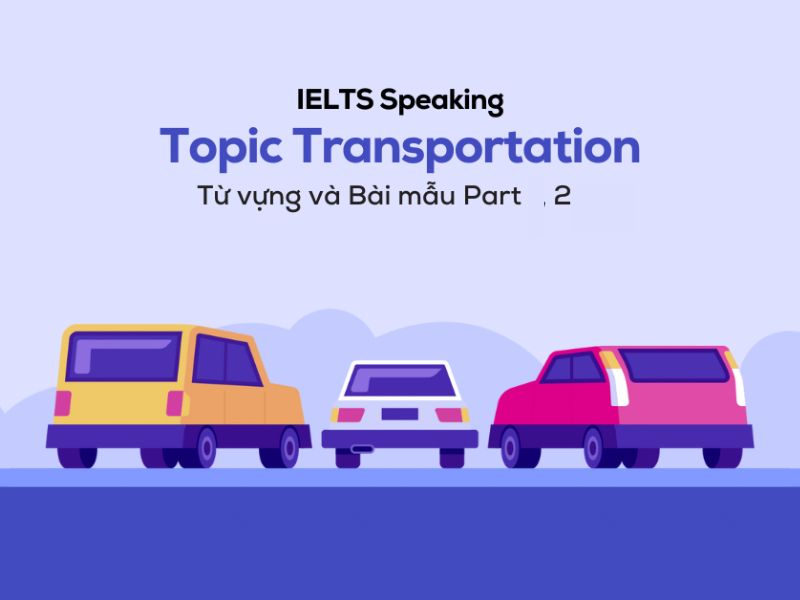
Câu hỏi: Describe a memorable journey you took. You should say:
|
One of my most memorable journeys was my trip to Ha Noi last summer. I decided to take a train from Da Nang to Ha Noi, which took about 12 hours. I chose the train because I wanted to enjoy the scenic views along the way.
During the journey, I was fascinated by the lush green rice fields and the majestic mountains passing by the window. I also met some interesting travelers who shared their stories and travel experiences. This interaction made the journey feel much shorter and more enjoyable.
When I arrived in Ha Noi, I was immediately struck by the vibrant atmosphere of the city. I visited Hoan Kiem Lake, where I took a lot of pictures and enjoyed the local street food. This journey was memorable because it combined beautiful scenery, engaging conversations, and cultural experiences that deepened my appreciation for my country.
Từ vựng ghi điểm:
- Ha Noi: Thủ đô của Việt Nam.
- Train: Tàu hỏa, phương tiện giao thông chạy trên đường ray.
- Lush green rice fields: Cánh đồng xanh tươi, biểu tượng của nông nghiệp Việt Nam.
- Majestic mountains: Những ngọn núi hùng vĩ, tạo nên cảnh quan thiên nhiên đẹp.
- Vibrant atmosphere: Bầu không khí sống động, nhộn nhịp của thành phố.
Câu hỏi: Describe a time when you used public transportation. You should say:
|
Not long ago, I traveled to Da Nang for a family gathering, and I chose to take a bus because it was a convenient and affordable option. The journey took around 8 hours.
I felt a bit nervous at first because it was my first time traveling by bus over such a long distance. However, once I settled into my window seat, I began to enjoy the ride. The views of the countryside, including rolling hills and picturesque villages, were breathtaking.
During the trip, I struck up conversations with fellow passengers, which made the journey even more enjoyable. I realized that public transportation is not just about getting from one place to another; it’s also a chance to connect with others. After this experience, my opinion about public transportation shifted; I found it to be an economical and social way to travel.
Từ vựng ghi điểm:
- Bus: Xe buýt, phương tiện giao thông công cộng.
- Window seat: Ghế gần cửa sổ, giúp có tầm nhìn đẹp.
- Rolling hills: Đồi núi nhấp nhô, tạo nên cảnh đẹp tự nhiên.
- Picturesque villages: Những ngôi làng đẹp như tranh vẽ, thường gặp trên đường.
- Economical: Tiết kiệm chi phí, dễ tiếp cận.
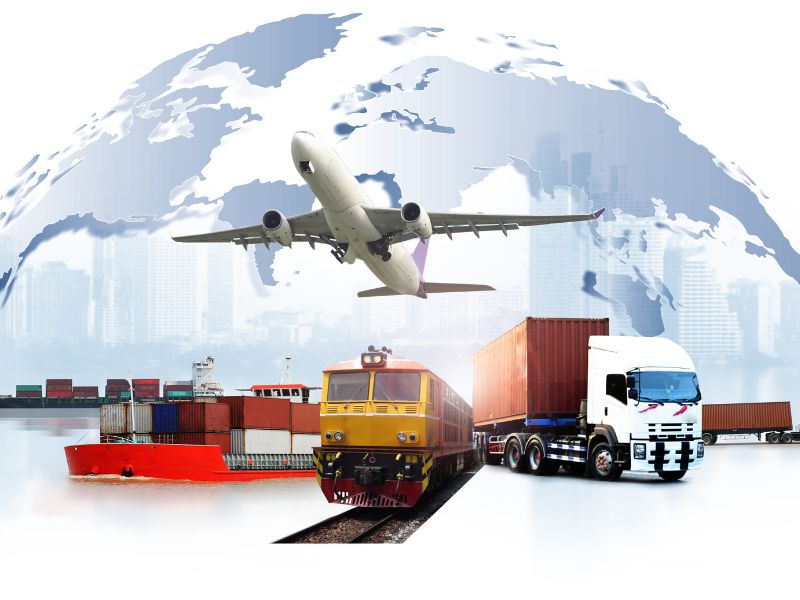
Câu hỏi: Describe a time when you learned something new while traveling. You should say:
|
During a trip to Mui Ne last year, I had the chance to learn about the local fishing culture. I rented a motorbike to explore the coastal areas, and one day, I stumbled upon a traditional fishing village.
Curious about their way of life, I approached a few fishermen and asked them about their fishing techniques. They were very welcoming and showed me how they use traditional nets to catch fish. I was amazed by their skills and the simplicity of their lifestyle.
This experience taught me not only about fishing but also about the importance of preserving local cultures. It made me appreciate the hard work and dedication that goes into traditional practices. Since then, I have been more mindful of supporting local communities and their crafts whenever I travel.
Từ vựng ghi điểm:
- Motorbike: Xe máy, phương tiện phổ biến để di chuyển.
- Traditional fishing village: Làng chài truyền thống, nơi nuôi dưỡng văn hóa địa phương.
- Traditional nets: Lưới truyền thống, công cụ cơ bản để đánh bắt cá.
- Preserving local cultures: Bảo tồn các nền văn hóa địa phương, giữ gìn di sản văn hóa.
- Mindful: Chú ý đến, có ý thức về những gì đang diễn ra xung quanh.
📌 Tìm hiểu thêm: Trọn bộ 50+ IELTS Speaking Topic Part 2 thường gặp nhất 2024
3. Bài mẫu IELTS Speaking chủ đề Transportation Part 3
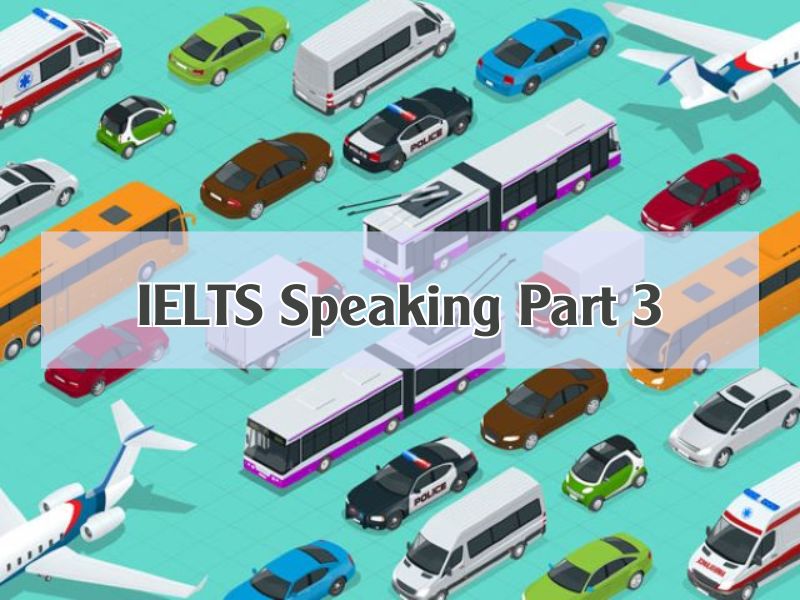
| Câu hỏi: What are the advantages and disadvantages of using public transportation? |
Public transportation has several advantages. Firstly, it is usually more affordable than owning a car. Many people can save money on fuel, insurance, and parking fees. Secondly, using public transport reduces traffic congestion. When more people take the bus or train, there are fewer cars on the road, which leads to less pollution and a cleaner environment.
However, there are also some disadvantages. For instance, public transport can be unreliable. Buses and trains may run late, which can be frustrating for commuters. Additionally, during peak hours, public transport can become overcrowded, making it uncomfortable for passengers.
- Affordable: Giá cả phải chăng, dễ tiếp cận tài chính.
- Traffic congestion: Tình trạng tắc nghẽn giao thông, xảy ra khi có quá nhiều phương tiện trên đường.
- Pollution: Ô nhiễm, thường là do khí thải từ xe cộ.
- Unreliable: Không đáng tin cậy, không thể dự đoán được thời gian.
- Overcrowded: Đông đúc, không đủ chỗ cho mọi người.
| Câu hỏi: How do you think transportation will change in the future? |
I believe that transportation will undergo significant transformation in the coming years. One major change could be the increased use of electric vehicles. These cars are more environmentally friendly as they produce no emissions, which could greatly reduce urban pollution.
Another possible advancement is the development of autonomous vehicles. Self-driving cars could revolutionize the way we travel, making it safer and more efficient. Furthermore, public transport systems may incorporate smart technology, allowing for real-time updates on schedules and routes, which can enhance the overall commuting experience.
- Transformation: Sự thay đổi, biến đổi lớn trong một lĩnh vực.
- Electric vehicles: Xe điện, phương tiện sử dụng năng lượng điện.
- Environmentally friendly: Thân thiện với môi trường, không gây hại cho thiên nhiên.
- Autonomous vehicles: Xe tự lái, không cần người điều khiển.
- Smart technology: Công nghệ thông minh, sử dụng dữ liệu để cải thiện hiệu suất.
| Câu hỏi: In your opinion, what is the most effective way to reduce traffic congestion in cities? |
In my opinion, one of the most effective ways to reduce traffic congestion is to encourage the use of public transportation. Governments can invest in expanding and improving bus and train networks to make them more accessible and convenient for commuters.
Additionally, promoting carpooling can also help. When people share rides, it reduces the number of vehicles on the road. Moreover, implementing bicycle lanes and improving pedestrian pathways can encourage more people to cycle or walk, thus alleviating traffic.
- Accessible: Dễ tiếp cận, có thể sử dụng được bởi nhiều người.
- Carpooling: Chia sẻ xe, nhiều người cùng đi chung một xe.
- Bicycle lanes: Làn đường dành cho xe đạp, giúp bảo vệ người đi xe đạp.
- Pedestrian pathways: Lối đi cho người đi bộ, tạo điều kiện an toàn cho người đi bộ.
| Câu hỏi: What role does technology play in modern transportation? |
Technology plays a crucial role in modern transportation. Firstly, navigation apps like Google Maps have made it easier for drivers and pedestrians to find their way. These apps provide real-time traffic information, helping users avoid bottlenecks and save time.
Moreover, technology has enhanced the safety features of vehicles. For instance, modern cars come equipped with advanced driver-assistance systems (ADAS) that help prevent accidents. Additionally, the rise of ride-sharing services has transformed the way people commute, offering more convenient options for urban travel.
- Navigation apps: Ứng dụng điều hướng, giúp tìm đường dễ dàng hơn.
- Bottlenecks: Điểm tắc nghẽn, nơi giao thông bị chậm lại.
- Advanced driver-assistance systems (ADAS): Hệ thống hỗ trợ người lái xe tiên tiến, giúp tăng cường an toàn.
- Ride-sharing services: Dịch vụ chia sẻ xe, cho phép người dùng đặt xe qua ứng dụng.
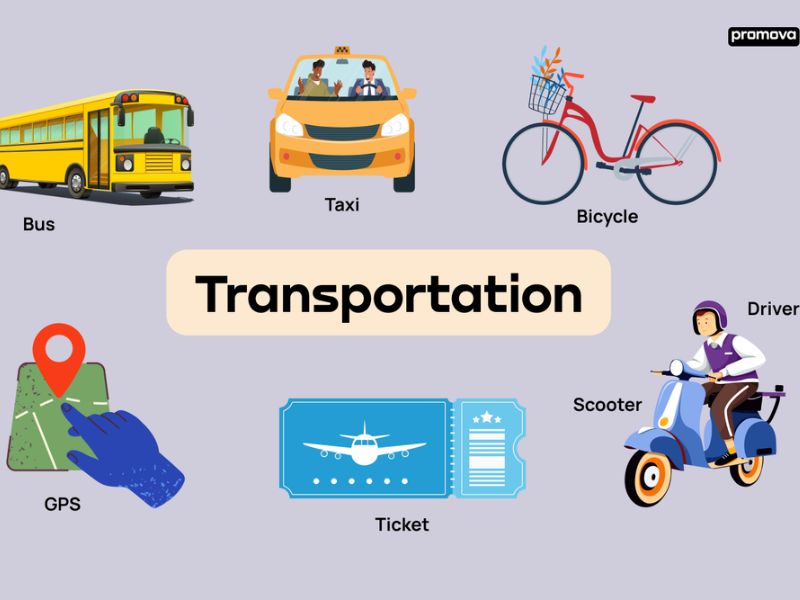
| Câu hỏi: How does transportation affect the economy of a country? |
Transportation has a significant impact on the economy of a country. A well-developed transportation system facilitates trade by allowing goods to be transported quickly and efficiently. This can boost local businesses and attract foreign investment.
Additionally, transportation creates jobs in various sectors, from manufacturing vehicles to operating public transit systems. A robust transportation infrastructure can also enhance tourism, as it makes it easier for visitors to explore different regions of a country.
- Trade: Thương mại, việc trao đổi hàng hóa giữa các quốc gia.
- Foreign investment: Đầu tư nước ngoài, nguồn vốn từ các nhà đầu tư quốc tế.
- Jobs: Việc làm, cơ hội công việc cho người dân.
- Robust transportation infrastructure: Hệ thống hạ tầng giao thông vững chắc, đáp ứng nhu cầu di chuyển của người dân.
- Tourism: Du lịch, ngành công nghiệp liên quan đến việc thu hút khách tham quan.
📌 Đọc thêm: [BẬT MÍ] Câu trả lời hay về IELTS Speaking topic part 3 cho mọi chủ đề
4. Những cụm từ và thành ngữ thông dụng về IELTS Speaking chủ đề Transportation
Dưới đây là hai bảng gồm các cụm từ và thành ngữ phổ biến cho IELTS Speaking chủ đề Transportation:
Cụm từ thông dụng trong IELTS Speaking chủ đề Transportation
| Cụm từ | Ý nghĩa |
| Public transportation | Phương tiện giao thông công cộng |
| Traffic congestion | Tình trạng tắc nghẽn giao thông |
| Peak hours/rush hours | Giờ cao điểm |
| Commute time | Thời gian di chuyển (đi làm, đi học) |
| Ride-hailing service | Dịch vụ gọi xe (như Grab, Uber) |
| Fuel-efficient vehicles | Phương tiện tiết kiệm nhiên liệu |
| Carbon footprint | Dấu chân carbon, lượng khí thải carbon |
| Urban transport system | Hệ thống giao thông đô thị |
| Eco-friendly transportation | Phương tiện giao thông thân thiện với môi trường |
| Pedestrian-friendly | Thân thiện với người đi bộ |
| Heavy traffic | Giao thông đông đúc, nhiều xe cộ |
| Traffic flow | Lưu lượng giao thông |
| Congested roads | Đường xá bị kẹt cứng |
| Bicycle-sharing program | Chương trình chia sẻ xe đạp |
| Reduce emissions | Giảm lượng khí thải |
Thành ngữ thông dụng trong IELTS Speaking chủ đề Transportation
| Thành ngữ | Ý nghĩa |
| Hitting the road | Bắt đầu hành trình, lên đường |
| Get the show on the road | Bắt đầu một điều gì đó, thường là một chuyến đi hoặc một kế hoạch |
| In the driver’s seat | Ở vị trí kiểm soát, điều khiển tình huống |
| Go off the beaten path | Đi theo con đường ít người đi, hành trình khác biệt |
| Beat the traffic | Đi sớm để tránh tắc đường |
| Throw someone under the bus | Phản bội ai đó vì lợi ích cá nhân |
| At a crossroads | Ở ngã rẽ cuộc đời, phải quyết định hướng đi |
| Life in the fast lane | Cuộc sống vội vã, thường với nhiều thử thách và nguy hiểm |
| Drive someone up the wall | Làm ai đó khó chịu, phát điên |
| Take the scenic route | Đi đường vòng để ngắm cảnh |
| On the right track | Đang đi đúng hướng |
| Smooth sailing | Diễn ra thuận lợi, suôn sẻ |
| Fast track | Con đường tắt để đạt mục tiêu nhanh chóng |
| Miss the boat | Lỡ cơ hội, bỏ lỡ điều gì quan trọng |
| Burn rubber | Lái xe rất nhanh |
Bạn có thể tìm hiểu thêm về: Khóa học IELTS cấp tốc kèm 1:1 được thiết kế độc quyền cho từng học viên
5. Ẵm trọn điểm thi IELTS Speaking chủ đề Transportation tại WISE ENGLISH
Chinh phục IELTS Speaking với chủ đề Transportation chưa bao giờ dễ dàng hơn khi bạn có WISE ENGLISH bên cạnh. Chúng tôi cung cấp một loạt các khóa học IELTS phù hợp với mọi trình độ, giúp bạn nhanh chóng nâng cao kỹ năng.
📌 Tìm hiểu ngay lộ trình Khóa học IELTS tại WISE ENGLISH ngay hôm nay
Tại WISE ENGLISH, bạn sẽ nhận được sự hỗ trợ tận tình từ đội ngũ giảng viên xuất sắc với điểm số IELTS 8.0+ và lộ trình luyện thi IELTS tập được cá nhân hóa, đảm bảo phù hợp với nhu cầu và mục tiêu của bạn.
Đặc biệt, phương pháp Tư Duy Não Bộ (NLP) của chúng tôi giúp bạn tiết kiệm tới 80% thời gian học mà vẫn đạt được kết quả tối ưu. Giáo trình của WISE ENGLISH được thiết kế chi tiết, bao gồm đầy đủ các dạng đề, chiến lược làm bài, và mẹo hữu ích để giúp bạn đạt điểm cao trong kỳ thi. Hãy để WISE ENGLISH đồng hành cùng bạn trên con đường chinh phục IELTS!
6. Tổng kết
Trên đây là những gợi ý và câu trả lời mẫu về IELTS Speaking chủ đề Transportation mà WISE ENGLISH đã tổng hợp và gửi đến bạn. Hy vọng bài viết này sẽ cung cấp cho bạn những từ vựng hay và hữu ích cho bạn trong quá trình luyện thi IELTS tới. Nếu có bất kì thắc mắc về những câu hỏi trên hoặc thông tin về khóa học thì hãy liên hệ ngay với WISE ENGLISH qua Fanpage, Hotline: 0901.270.888 để được tư vấn chi tiết nhé!










